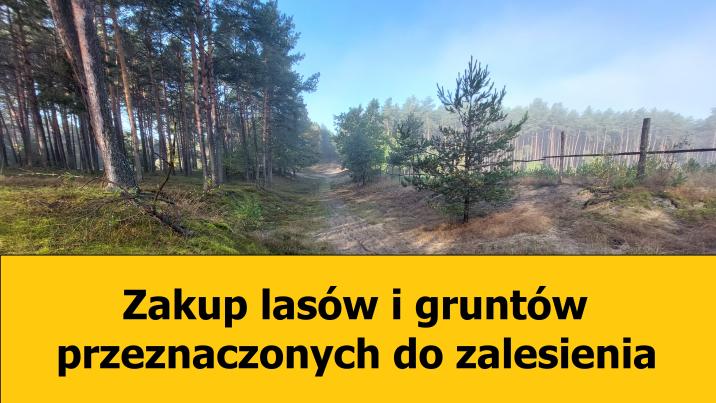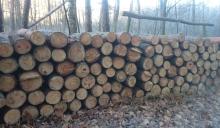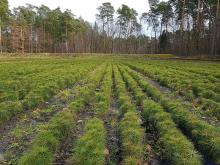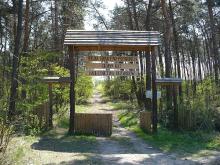 Asset Publisher
Asset Publisher
Polish forests
Poland is in the European lead, while concerning the area of all forests. They cover about 29,2 % of the country territory, and grow within the area of 9,1 million hectares. The overwhelming majority of the forests is state owned, of which almost 7,6 million hectares are managed by the State Forests National Forest Holding..
The number of Polish forest is still growing. The forestation rate of the country has increased from 21 % in 1945 to 29,2 % at the moment. Between 1995 and 2008, the forest area increased by 310 thousand ha. The basis for afforestation works is the "National Programme for Increasing the Forest Cover" (KPZL), assuming an increase of the forestation rate up to 30 % by 2020 and up to 33 % by 2050. Polish forests abound in flora, fauna and fungi. 65 % of the total number of animal species live there.
The forests grow in our country on poor soils, mainly because of the development of the agriculture in previous years. It influences the distribution of the types of the forest sites in Poland. Over 55 % of the forest areas is covered with coniferous forests. In other areas, there are forest sites, mainly the mixed ones. Their small part constitute alder and riparian forests – not more than 3 %.
In the years 1945 – 2011 the area of natural deciduous tree stands within the area of the State Forests National Forest Holding increased from 13 to 28,2 %.
Within the lowlands and uplands the most often occurring tee species is pine. It covers 64,3 % of the forest area of the State Forests National Forest Holding and 57,7 % of private and commune forests. In the mountains the predominant species is European spruce ( in the west) and European spruce with beech (in the east). Domination of pine is the result of carrying on sustainable forest management in the past. Once, the monocultures (crops or cultivations of one species) were the answer to the great demand of industry for wood. Such forests appeared to be quite fragile to climatic factors. They also were often the prey of pests' expansion.
In Polish forests, the share of other tree species, especially deciduous trees have been systematically increasing. The foresters have stepped aside from monocultures – that is why, they try to fit specific species of the forest stand to the natural stand, that would be proper for the given area. Thanks to that, in the years 1945 – 2011, the area of the deciduous tree stands within the lands of the State Forests National Forest Holding increased from 13 to 28,2 %. There occur more and more frequently the following tree species: oaks, ashes, maples, sycamore maples, elms, but also birches, beeches, alders, poplars, hornbeams, aspens, tilias and willows.
Our forests are the most often represented by the forest stands aged 40 to 80 years. The average age of the forest equals 60 years. More and more trees are of big size at the age over 80 years. Since the end of the Second World War, the forests' area has increased up to almost 1,85 million hectares.
Raport o stanie lasów w Polsce 2012
 Asset Publisher
Asset Publisher
Ogłoszenie o możliwości zakupu lasów i gruntów przeznaczonych do zalesienia
Ogłoszenie o możliwości zakupu lasów i gruntów przeznaczonych do zalesienia
Skarb Państwa – Państwowe Gospodarstwo Leśne Lasy Państwowe Nadleśnictwo Rozwadów informuje, że jest zainteresowane zakupem lasów lub gruntów przeznaczonych do zalesienia, położonych w zasięgu administracyjnym Nadleśnictwa Rozwadów, który można sprawdzić na stronie Banku Danych o Lasach pod adresem: https://www.bdl.lasy.gov.pl/portal/mapy
Oferowane do sprzedaży grunty powinny stanowić własność osób fizycznych, osób prawnych lub jednostek organizacyjnych nieposiadających osobowości prawnej, którym ustawa przyznaje zdolność prawną.
Las lub grunt przeznaczony do zalesienia może być nabyty w szczególności
w przypadku:
1) jego bezpośredniej przyległości do gruntu pozostającego w zarządzie Lasów Państwowych,
2) zniesienia współwłasności lasu, gruntu przeznaczonego do zalesienia lub innego gruntu lub nieruchomości,
3) regulacji przebiegu granicy polno-leśnej.
Ponadto:
1) w ewidencji gruntów i budynków (w starostwie) działka musi być sklasyfikowana jako las (Ls), a jeżeli jest rolą to musi być przeznaczona do zalesienia (w gminnym planie zagospodarowania przestrzennego lub posiadać decyzję o warunkach zabudowy
na zalesienie),
2) nie może być zabudowana, musi być wolna od naniesień,
3) sprzedawana nieruchomość musi mieć uregulowany stan prawny (m.in. założoną księgę wieczystą i nie może być obciążona na rzecz osób trzecich),
4) granice działki są znane, widoczne w terenie i sąsiedzi nie są w sporze granicznym.
W przypadku podjęcia przez Nadleśnictwo decyzji o chęci zakupu lasu lub gruntu przeznaczonego do zalesienia, należy przygotować:
1) wypis z ewidencji gruntów i budynków oraz mapę ewidencyjną,
2) wypis z Planu Zagospodarowania Przestrzennego Gminy lub decyzję o warunkach zabudowy i zagospodarowania terenu, z których wynika, że grunt jest przeznaczony
do zalesienia,
3) oznaczenie księgi wieczystej prowadzonej dla lasu lub gruntu przeznaczonego
do zalesienia,
4) oświadczenia właścicieli sąsiednich nieruchomości o braku sporów granicznych
lub oświadczenie o geodezyjnym ustaleniu granic,
5) oświadczenie o braku obciążeń na rzecz osób trzecich,
6) oświadczenie o częściach składowych oraz przynależnych,
7) ustaloną wartość rynkową odpowiadającą cenom rynkowym oraz realnej wartości gruntu, wykonaną przez rzeczoznawcę majątkowego.
Las, grunt przeznaczony do zalesienia może być nabyty za cenę nie wyższą od wartości określonej przez rzeczoznawcę majątkowego.
W celu finalizacji zakupu, niezbędne będzie określenie wartości nieruchomości przez rzeczoznawcę majątkowego. Wszelkie koszty (rzeczoznawcy majątkowego, notariusza), ponosi Sprzedający. Cena ustalona przez rzeczoznawcę podlega negocjacji przed zawarciem notarialnej umowy kupna-sprzedaży.
Informujemy, że nabycie może nastąpić po uzyskaniu pisemnej zgody Dyrektora Dyrekcji Generalnej Lasów Państwowych na podstawie art. 37 pkt 3 ustawy z dnia 28 września 1991 r. o lasach (j.t. Dz.U. z 2024 r. poz. 530 z późn. zm.).
Oferty składać można w formie pisemnej na formularzu ofertowym [do pobrania poniżej] pod adres nadleśnictwa – osobiście, listownie, bądź e-mailowo:
Nadleśnictwo Rozwadów, ul. Przemysłowa 1 37-465 Stalowa Wola
W przypadku pytań, prosimy o kontakt pod numerem tel. 15-824-17-55 wew. 18
Podstawa prawna:
- Ustawa z dnia 28 września 1991 roku o lasach (j.t. Dz.U.2024 poz. 530),


 fot. Paweł Fabijański
fot. Paweł Fabijański
 fot. Paweł Fabijański
fot. Paweł Fabijański
 fot. Paweł Fabijański
fot. Paweł Fabijański





